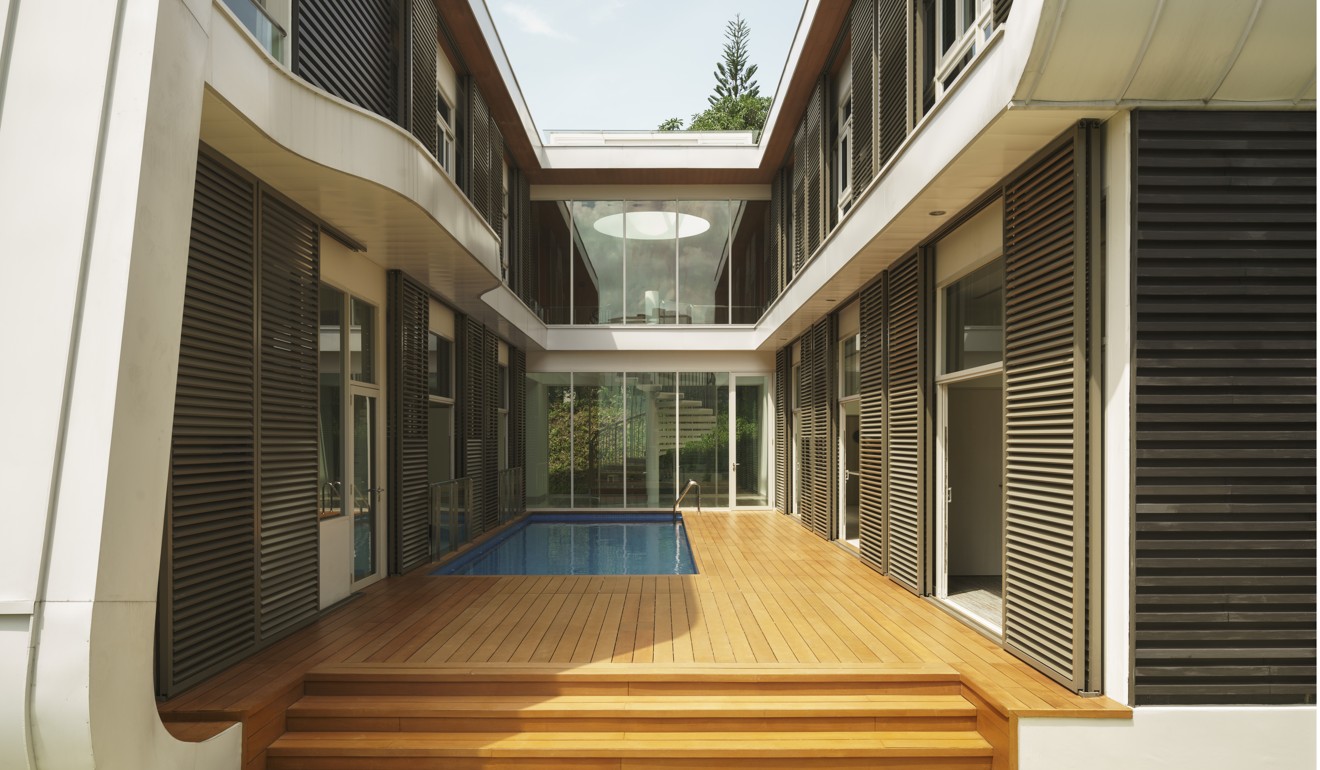
Sustainable homes see rising demand in region; Hong Kong a laggard
With rich and aspiring homeowners increasingly favouring environmentally friendly features over ostentation, Singaporean architects are pushing zero-carbon communities - a trend yet to take off in Hong Kong
Chinese investors seeking luxury properties are increasingly choosing sophisticated, environmentally friendly architectural features over ostentatious displays of wealth, a survey seems to suggest. Asked to choose what they valued most in a luxury home, 28 per cent of Chinese respondents to a Sotheby’s International Realty survey cited sustainable or eco-friendly features over waterfront location (21 per cent) or access to golf (21 per cent).
This was the response from 100 Chinese survey participants with US$250,000 to US$1 million in investible assets. They were among 600 people surveyed globally for the 2017 Global Affluence Report, conducted with Wakefield Research. Reinforced by earlier surveys, it concludes that ultra-high net worth individuals and emerging luxury consumers alike are increasingly interested in green construction, and the luxury home market is responding.
Jason Pomeroy, founder of Singapore-based eco-architecture firm Pomeroy Studio, finds that sustainability, “once perceived as the preserve of the tree-hugger”, is now finding its way into the mainstream.
“At all levels, people want to live in a more eco-friendly environment that will reduce the negative aspects of climate change,” he says. “We want to be appreciating lower energy bills, the benefits of natural light and ventilation, and ensure there is a lower level of toxicity in the materials in our homes.”

The fact that it actually came in under budget proves Pomeroy’s point that greener building needn’t cost the earth.
In his modern interpretation of a traditional Singaporean black-and-white bungalow, costs were kept down through a passive design approach, he says. “We reinterpreted the veranda spaces, shutters, the deep overhanging roofs and basically took the essence of the house and gave it a modern twist.”
Doing so meant a 30 per cent reduction in construction materials, and a reduction of 20 to 25 per cent of the costs normally associated with mechanical and electrical ventilation and lighting.
“We reduced the amount of glass by 50 per cent, while still allowing enough natural light into the inner reaches of the house,” Pomeroy says. “The solar cells on the roof [equating to about 125 square metres of solar cell] provide more than enough energy for a family of five without having to draw from the grid. The surplus can be used to power a BMW i3 electric car to run around town without having a petrol bill.”
The house scored a platinum rating in Green Mark, Singapore’s environmental benchmark, for its water efficiency, waste management, and garden plantings, which reduce the outdoor air temperature and thereby the load on indoor cooling. A central swimming pool further boosts the home’s passive cooling properties.

There is no doubt, says Pomeroy, that such green principles can also be applied to high-rise residential developments. He points to 2016’s Milano Residences in Manila, a luxury condominium complex with public space interiors designed by Versace Home, as an example of how a high-rise residential development can be both luxury and sustainable/low carbon.
“Milano Residences has numerous sustainable features, including a passive-design approach that features high ceilings and narrow floor plates that optimise natural light penetration and natural ventilation,” Pomeroy says. “It also incorporates a green roof with dense foliage populating the open spaces that helps collect rainwater and reduces the overall ambient temperature of the building. Lastly, materials were chosen based on their environmental credentials.”
Later this year, Pomeroy will start work on an 18-storey, zero-carbon residential tower in Gavle, Sweden.
“The starting point for any green design is to ensure that the form of the building matches the climate,” he says. There is no point designing a glass tower that directly faces the sun. Window openings should face the prevailing wind direction to reduce reliance on air conditioning, and an abundance of vertical greenery will help as a pollution filter.

Hong Kong architect Yvonne I. L. Ieong, founder of y.i. & associates, points out that existing buildings can be made greener, too. She recently retrofitted six houses in a 30-year-old residential complex on Lantau Island that included an upgrade of the sewage system to filter grey water for recycling. (The cost is about around HK$1.5 million for the system plus HK$500,000 for installation covering all six houses).
North-facing windows were enlarged, and skylights installed, to bring in more natural light. All windows were double glazed (HK$2,100 per square metre, versus HK$1,400 for regular glass); and shading devices on south-facing windows were repaired rather than replaced.
Bamboo flooring and bamboo veneer for carpentry work were used as sustainable alternatives to forest timber, with “not much price difference”, Ieong says. Fans and LED lights were installed throughout to save energy.
Diatomaceous earth paint (also known as D.E. paint, the powder of siliceous sedimentary rock) used on all interiors is more expensive than regular low-VOC paint (about HK$150 per square metre, versus HK$50), but is environmentally favourable because it can absorb moisture and help filter the indoor air.
Although Ieong’s professional focus is on sustainable design, she doesn’t believe the majority in Hong Kong share that sentiment just yet. “Sustainability and health are always interrelated – and people seem more willing to pay for health than sustainability at the moment,” she says.

